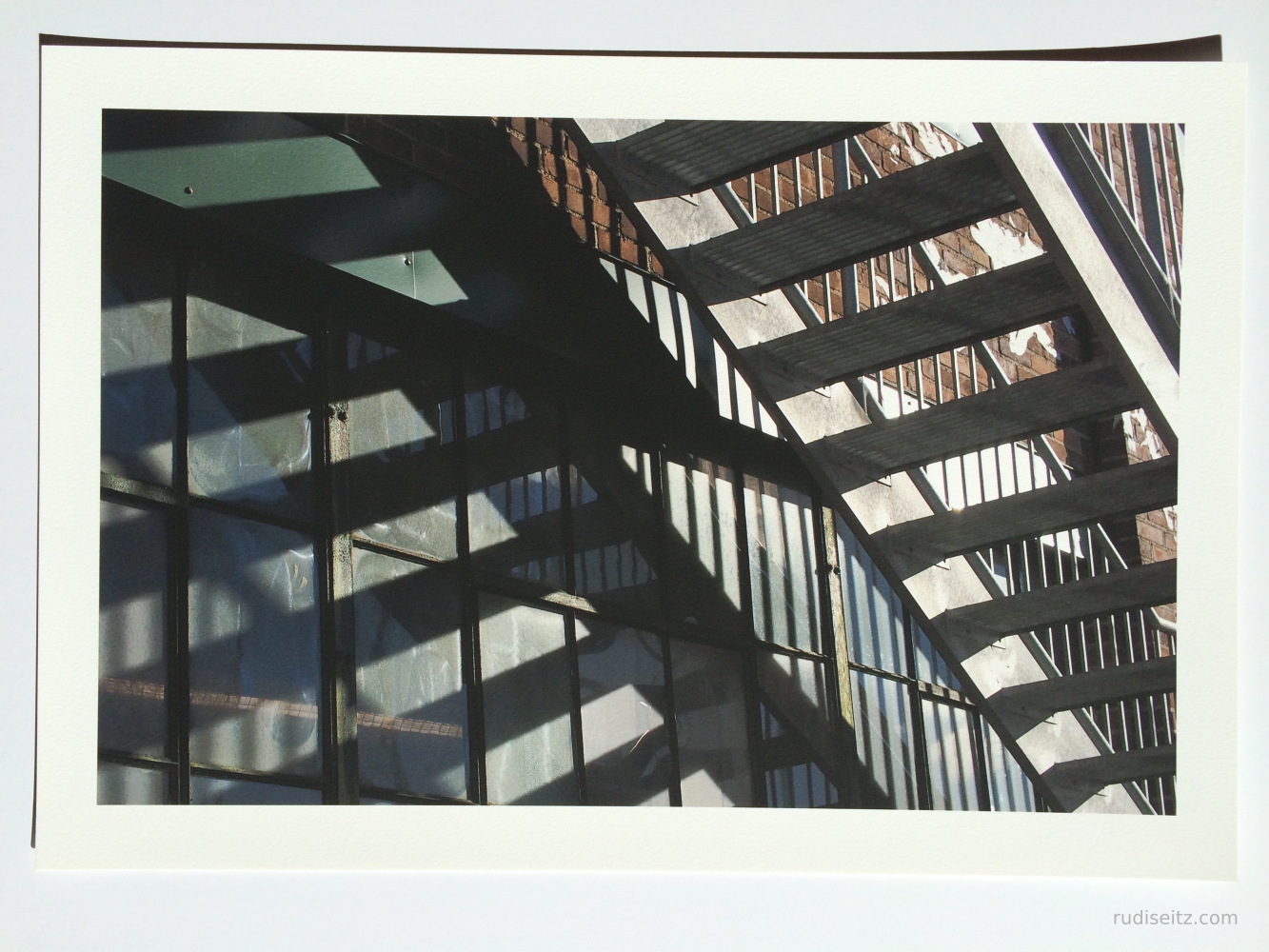It may be a secondary and unintended “function” of fire escapes, but they sure cast beautiful shadows. This kind of geometric intrigue is abundant in an urban setting and while I never get bored with it, I sometimes feel there’s a problem of too-muchness: as one sets out to take this sort of urban-geometric shot, one gathers a host of beguiling images with no way to choose between them. A few years ago I decided to shoot in squares because it made me work harder and it made successful shots rarer but more easy to recognize. A square is a tight space. Nothing can really “stretch out” in a square and you can’t use long diagonals to convey a sense of flowing, easy motion. A square frame can expose the asymmetry of an image and make it look lopsided, while the same square frame can make a highly symmetrical image look stylized, pretty but not dynamic. In a rectangular composition you can leave some corners unaddressed, establishing a hierarchy of active versus inactive areas, but this is harder to pull off in a square, where all four corners exert a balanced magnetism: if the eye is drawn to one corner of a square and finds nothing interesting in that place, there’s a greater risk of disengagement. For an image to seem truly dynamic in a square it needs to struggle against the square’s symmetry in some way while still being full and balanced enough to do justice to all the available space. It is fun to step away from these challenges sometimes and not shoot in a square.
 ■
■